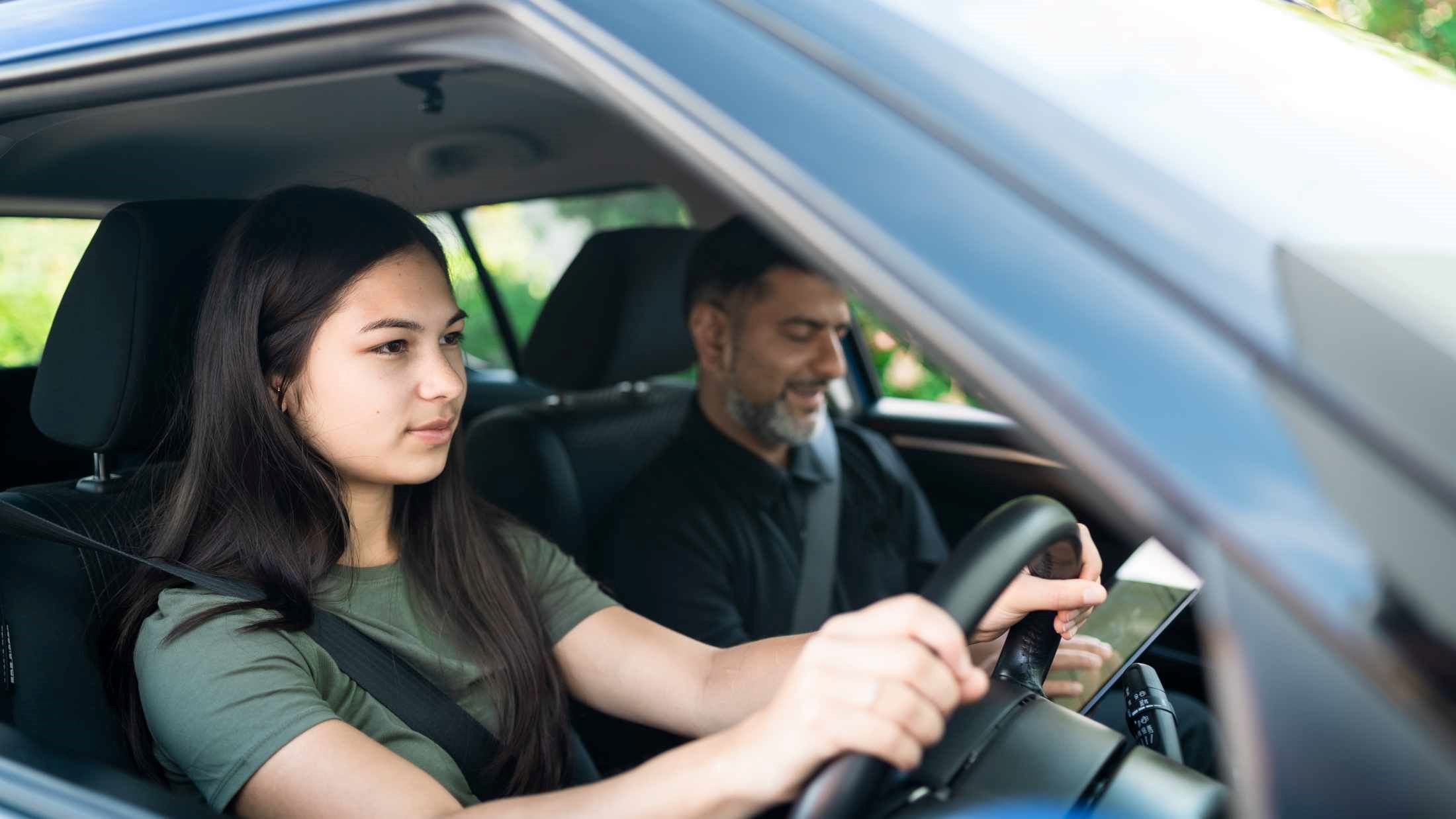Before you can hit the road as a new driver, you need to pass your DVLA driving test and obtain a valid licence. Our driving test practice guide will walk you through this process, from tips to passing your theory, and acing your practical driving test.
In this section:
Getting your provisional licence
The first step is to apply for a provisional licence, which will let you drive with an ‘L’ plate under the supervision of a driver with a valid UK licence.
To be eligible for a provisional licence for driving you must:
- Be a minimum age of 17 years old1
- Be able to read a number plate from 20 metres away (with the assistance of glasses if needed)
- Have legally lived in the UK for at least 185 days in total in the past 12 months
Find a good driving instructor
Your driving instructor will be with you every step of the way while you’re learning how to drive, so it’s essential to find a driving instructor that suits your learning style.
Make sure that you find a good driving instructor with all the necessary qualifications and look out for some of these qualities too:
- Experience – it’s a good idea to go for an instructor who has helped lots of people pass their driving test
- Patience – learning takes time, your instructor will need to be patient with your learning pace
- Calm – the last thing you need is a driving instructor with road rage, a calm instructor will help you through tricky situations on the road
- Good communication – good communication means your instructor will give you practical feedback on your strengths and weaknesses
- Punctual – being on time to collect you for your lesson is important, so find an instructor that you can count on
- Recommended – it’s always a good idea to try a driving instructor recommended by someone you know
Driving lesson tips
Whether you’re planning on getting automatic driving lessons or manual driving lessons, your first experience driving can be exciting and daunting at the same time.
Here are a handful of driving lesson tips to get comfortable and ready to take the wheel:
- Read up on road signs and speed limit
- Don’t forget your provisional licence
- Get enough rest before your lesson and arrive on time
- Wear comfortable clothes and shoes
- Check your eyesight meets the minimum standard for driving. You’ll need to be able to read a car number plate made after 1 September 2001 from 20 metres (with glasses or contact lenses, if necessary).2
Booking your theory test
A theory test will try out your driving knowledge and hazard perception skills. So, before you can sit your practical driving test, you must have passed a DVLA theory test. You can book your theory test online through the government’s website.
Theory test preparation
Preparing for a theory test is just like any other test, you will need to revise the 14 topics thoroughly and keep practising:
- Look for apps and e-resources with practice questions you can do in your free time and on the go, including the DVSA Practice Theory Test
- Give enough revision time and practice to each topic
- Watch hazard perception videos online to improve hazard awareness
- Ask your driving instructor or drivers you know for advice when you get stuck
- Get someone to test your knowledge
There are two parts to your theory test, multiple-choice questions and the hazard perception test.
Booking your practical driving test
Booking your practical driving test online can be done easily through the government’s website. To book your driving test, you will need:
- UK driving licence number
- Credit or debit card for payment
- Driving instructor’s reference number if you want to check their availability
You can book your test up to 24 weeks in advance, the sooner you book it, the more likely you are to get the date you desire. There is often a queue for booking your practical test so make sure the date you pick is realistic for your driving confidence.
Driving test pattern
It can be nerve-wracking waiting to get out on the road, so it’s essential to know what to expect on your driving test. There are five different aspects that you will be tested on:
- Eyesight check – You will be asked to read a number plate from 20 to 20.5 meters distance (using glasses or contact lenses if you require them)
- ‘Tell me show me’ questions – You will be asked vehicle safety questions based on surrounding situations
- General driving ability – You will be assessed on how well you drive in different road traffic situations and will need to follow the examiner’s directions and show you can pull over safely.
- Reversing your car and parking – Your examiner may ask you to parallel park at the side of the road, park in a parking bay or pull up on the right-hand side
- Independent driving – You will have to drive independently for around 20 minutes using either a satnav or road traffic signs
- You are allowed up to 15 minor mistakes during your practical driving test, if you exceed this, then it will result in a failure
Last minute tips for test day
Here are some things that can help you feel confident and prepared for your practical driving test:
- Familiarise yourself with ‘show me tell me’ questions beforehand
- Prepare all your documents the night before
- Brush up on traffic road signs, roundabout exits and speed limits
- Arrive 15 minutes early to avoid rushing and calm any pre-test nerves
- Make sure to check your mirrors frequently
- Practice driving on test routes beforehand
- Ask your examiner to repeat something if it is unclear
After passing your driving test
Once the long-awaited day of passing your driving test comes, your instructor will give you that all-important pass certificate. Your driving licence should arrive by post within three weeks. But before you can legally get on the road, you’ll need to ensure you have the following:
- A car with a valid MOT certificate
- Car tax
- Car insurance
Whether you’re about to sit your theory test or just booked a practical driving test for the first time, we hope you found this guide useful. For more helpful motoring tips and guides, visit AXA.
1Exemptions apply for those receiving higher rate mobility component of DLA (Disability Living Allowance) or the enhanced rate mobility component of PIP (Personal Independence Payment)
2Ensure you check this with a qualified optician











